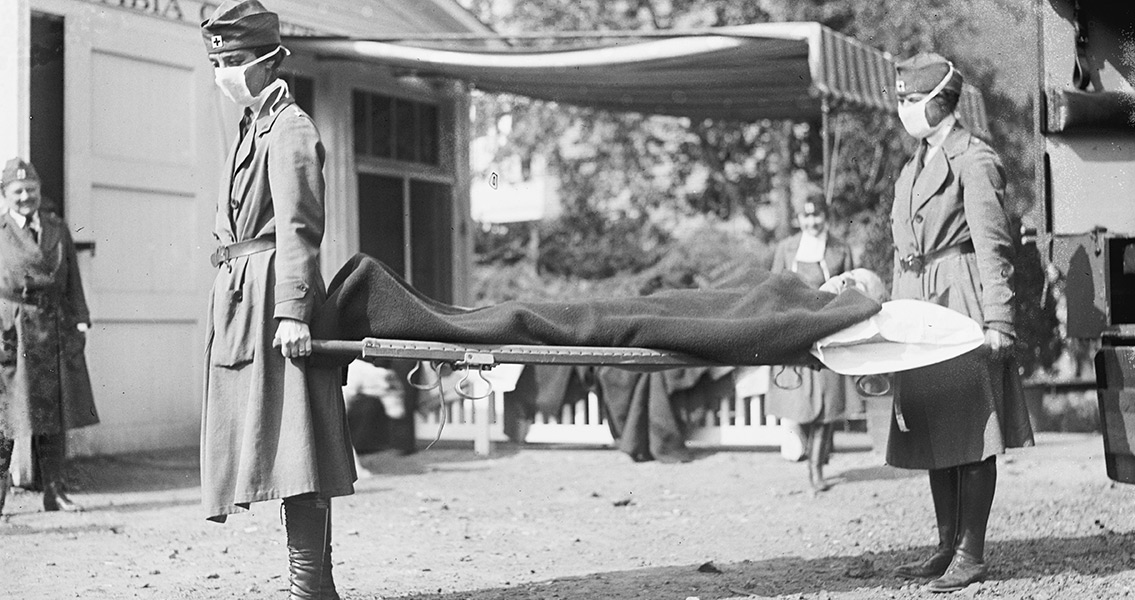<![CDATA[The 11th March 1918 is regarded by many historians and scientists as the day the first cases of the 1918 flu pandemic were reported. Within a few months the deadly strain of influenza had spread across the world, proving far more deadly than the First World War had been. At the U.S. Army base at Fort Riley, Kansas, Private Albert Gitchell reported severe flu like symptoms to military medics. Gitchell was swiftly quarantined in the tent for soldiers with potentially contagious diseases, but it was too late. Gitchell was a cook in the army base, and until the evening before had been serving food to the soldiers stationed there. Shortly after Gitchell had arrived for treatment, Corporal Lee Drake was admitted to the infirmary with similar symptoms. Sick soldiers continued to report to the camp medics, so that by midday over 100 soldiers were receiving treatment. All demonstrated symptoms that would become synonymous with the devastating pandemic; blue faces and horrendous coughs. In total, 46 of the soldiers at Fort Riley died in this initial outbreak of the flu. This strain of influenza that was first detected in Fort Riley was particularly virulent and particularly lethal. Modern scientists are still baffled as to what exactly made this form so devastating, allowing it to decimate the fit, healthy adult populations which were usually resilient to flu, as well as the elderly, very young or previously sick who usually suffered the most dangerous effects of the virus. One explanation for its origins is that the troops at Fort Riley lived in close proximity to swine and poultry. It has been speculated that a strand of avian flu was transmitted to pigs, where it mutated into a new form which could have been passed on to, and between, humans. Fort Riley was a training camp for U.S. Soldiers scheduled to head out to Europe to fight on the Western Front in the First World War. The soldiers dispatched from there, some barely recovered from the flu, were possibly the conduits that brought the virus to Europe, where its spread accelerated dramatically. By June 1918, 31,000 cases of the flu had been reported in Great Britain. From there it quickly spread across Europe, to the front lines of the First World War, and then beyond, into Germany and Eastern Europe. Troop movements through Europe, combined with the devastation of the conflict itself, provided the perfect conditions for the disease to spread. The pandemic came to be known as the Spanish flu, a title which is perhaps misleading. Spanish neutrality in the war had meant that the outbreak had been covered with much greater transparency in the media there, while the governments of nations fighting in the conflict tended to censor reports in an attempt to preserve morale. The virus was devastating in Spain, having killed 8 million Spaniards, however, it was probably made to seem more prevalent than anywhere else simply because the country's press were free to report its spread. By the summer of 1919 the influenza crisis had started to come to an end. It had been the deadliest pandemic in recorded history, killing between 20 and 40 million people, and infecting 500 million (a third of the world's population in 1918). It had spread to America, Europe, Asia, Africa and Australasia, aided by the circumstances of war and the general 'shrinking of the world' that took place through globalisation and advances in transport in this period. Almost a hundred years later, scientists still struggle to understand the exact causes of the flu strain which claimed more lives than the devastating global war that preceded it.]]>
The Start of the 1918 Flu Pandemic
